Heritage Custom Farming
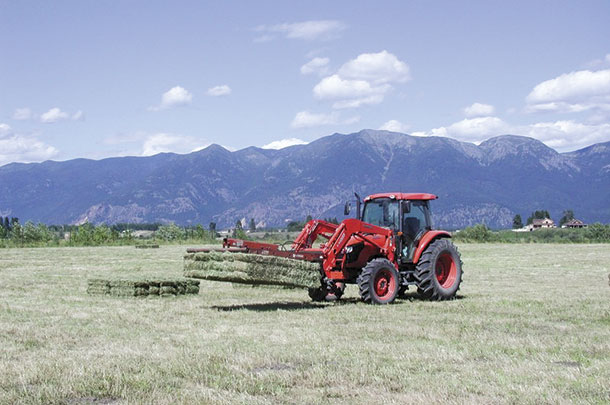
Tryg Koch started his custom farming business with an idea, a different business partner and nothing but a borrowed tractor.
Now, more than 10 years later, he and his current business partner, Lee Buller, farm almost 2,500 acres, own a full line of farm equipment and not only continue their custom farming services but grow and sell hay to the competitive Montana horse hay market.
PHOTO: Koch uses a bale accumulator to keep his small square bales in groups of 10. Photo provided by Tryg Koch.
See how they combat pests and other issues here: Montana custom farming operation fight pocket gophers, beats spoilage
Table Rock Farm
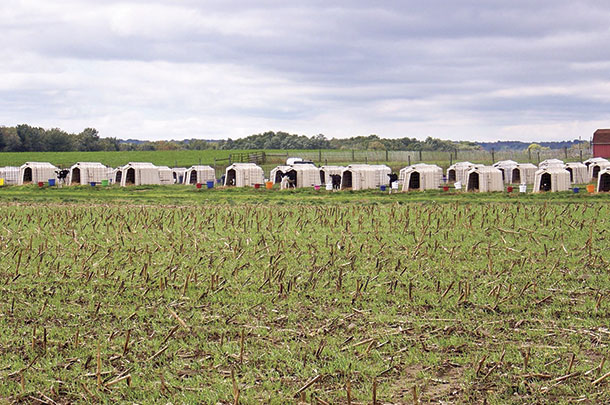
The soil at this New York farm is no longer the same as it was decades ago. Years of repeated plowing and harrowing of cornfields resulted in barren soils with severe erosion concerns.
Today, year-round cover cropping, zone tillage or no-till practices, along with precision applications of manure, has increased soil organic matter and led to increased crop yields as well as crops that withstand drought pressures. Soil erosion is no longer an issue.
PHOTO: Cover crops and calf hutches. Photo provided by Meghan Hauser.
Read their lessons learned here: Building soil health at Table Rock Farm
Jennie and Dan Kapszukiewicz
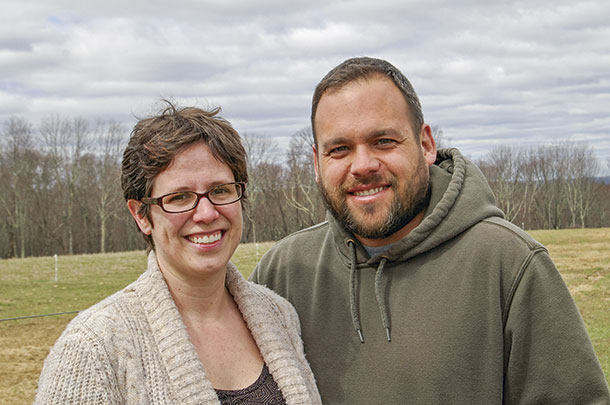
In Connecticut, Jeannie and Dan Kapszukiewicz had been growing hay on 30-plus acres for many years. In 2012, they decided it would be a more sustainable use of their land to return part of it back to pasture and began raising 100 percent grass-fed and grass-finished beef.
After attending grazing conferences and experimenting on part of their acreage, they were able to go from two cows to 30 head by successfully rotationally grazing and managing pasture for maximum production.
PHOTO: Jennie and Dan Kapszukiewicz started with two grass-finished beef cows and turned that into 30 head by successfully rotationally grazing and managing pastures for maximum production. Photo by John Hibma.
Read what they did here: Grazing 'tight and tall'
Color Wheel Farm
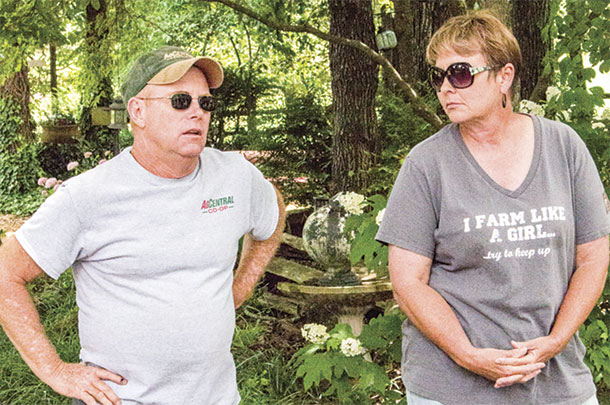
When life gives you lemons, you make lemonade. When Brad and Kim Black ended up with several acres of switchgrass after a contract with a bioenergy program, they decided to put it to use.
Previously grazing Kentucky-31 fescue, volunteer dallasgrass and a little orchardgrass, they found switchgrass gave them higher weaning weights, and they could put pounds on their cattle cheaper than they could with supplements.
PHOTO: Brad and Kim Black manage two sides of their operation to make the whole farm run smoothly. Photos by Carrie Veselka.
Read their story here: Color Wheel Farm gets high weaning weights with switchgrass.
Circle D Farms
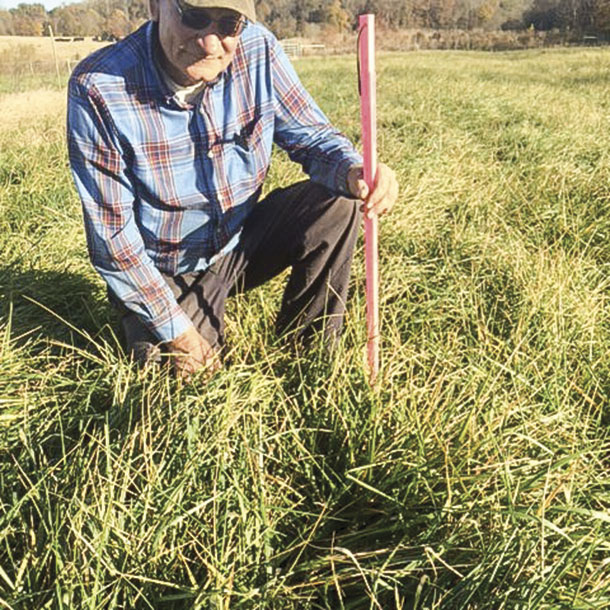
North Carolina cattlemen Oscho and Eric Deal raise up to 100 head of brood cows with a 365-day grazing goal. In order to limit the amount of hay fed, they stockpile the majority of their pastures for October-through-March grazing. These pastures are strip-grazed for best success.
PHOTO: Oscho Deal shows the new grass height and the grazed grass height. Photo provided by Eric Deal.
Read how they do it here: Synching pasture and cattle on Circle D Farms
Baker Angus
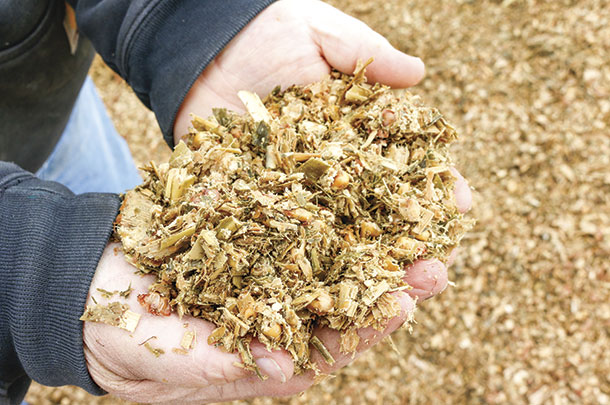
Continual learning: That’s what Jerry Baker of Vale, Oregon, attributes to his operation’s success. In the 19 years he has worked there, now ranch foreman, he has “built this thing up from the ground,” selling 150 to 200 bulls each year, running 500 cow-calf pairs and managing 2,500-plus acres.
Whether it was self-taught silage or restoring a run-down rangeland, Baker says it takes asking a lot of questions and keeping up with the continual stream of available information.
PHOTO: Mahler taught himself to make his own silage, which he feeds in a TMR to his bulls. Photo by Carrie Veselka.
Read about his operation here: Constant learning is the key to oregon ranch's success
Split Ear Ranch
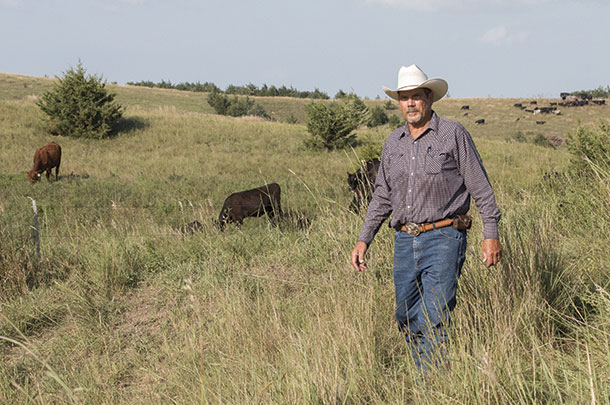
During the drought in 2012, Steve and Sheila Grudzinski were one of the many producers who sold their cow herd. With more than 1,000 acres but no cattle, Steve Grudzinski turned to custom grazing. It didn’t take long for him to realize the cows ate only the grasses they wanted – “the ice cream grass” – and wouldn’t touch the Kentucky bluegrass or brome.
With some help from extension, he revamped his grazing plan to include cross fences and more cattle.
PHOTO: Steve Grudzinski in a pastures grazed by yearling heifers. Photo by Lynn Jaynes.
Find out what he learned here: Custom grazing in the Nebraska hills
Lannett Edwards and Neal Schrick
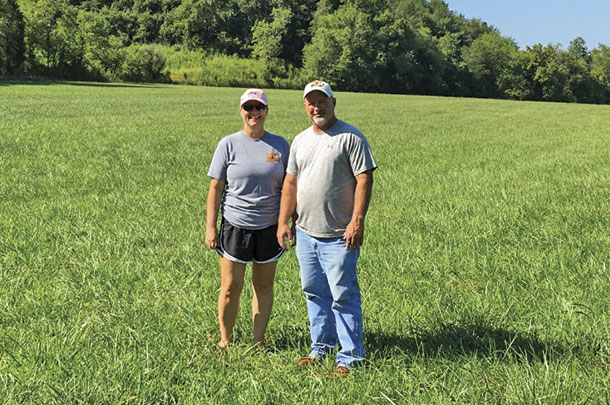
Ironweed, blackberry, honeysuckle and sunflower might make a great kitchen table bouquet, but they make a terrible hayfield. Yet that was the state of the hayfields when Lannett Edwards and her husband, Neal Schrick, decided to get into the hay business.
While quality hay is their short-term goal, the long-term goal is to put cattle on it and establish a custom heifer development operation using intensive rotational grazing.
PHOTO: Lannett Edwards and her husband, Neal Schrick, decided to get into the hay business. Photo by David McIntosh.
Read their journey here: Tennessee producers bring order to a farm in chaos.
Carl Blackmer
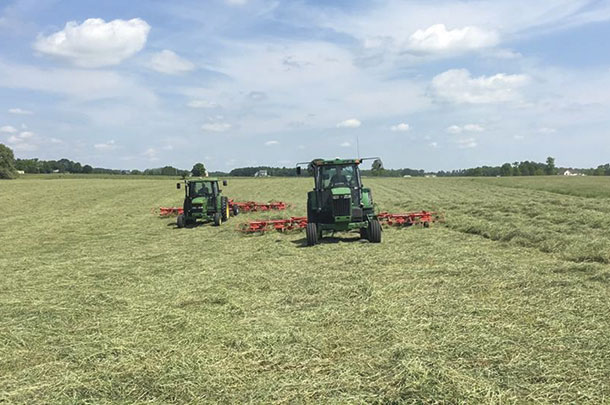
A good businessman meets the needs of his customers. But what if the customers want a different-sized bale than what you have on hand? Well, you do like this New York producer, and you give it to them.
Using a Steffen hay press, Carl Blackmer uses the convenience of baling with a large square baler, then resizes bales through the winter for customers requiring smaller bales. This has allowed him to expand his business without gaining access to more land.
PHOTO: Tedders move through a hayfield on Old Fort Farm near Livonia, New York. Photo provided by Carl Blackmer.
Learn more about his marketing here: Growing a New York hay business without more land.
Knott Creek Ranch
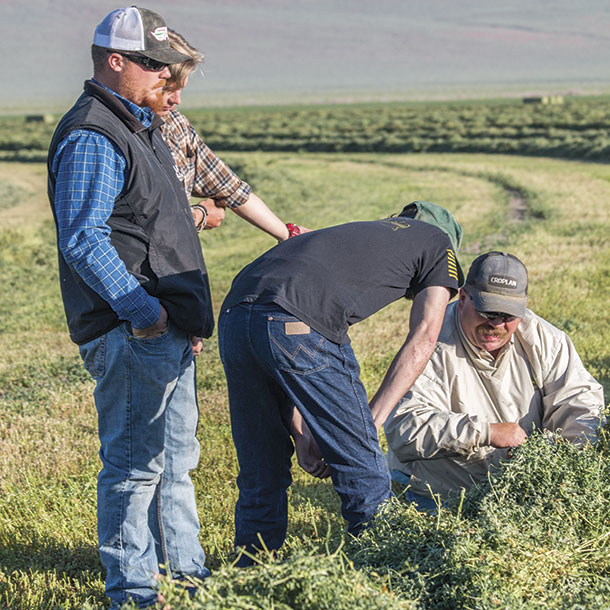
What was once described as a cow ranch with “a little forage on the side” has turned into a successful hay operation in Nevada’s sagebrush country. The project included installing 11 irrigation pivots, planting alfalfa, expanding the crop base to 1,600 acres and increasing the cattle herd to 1,000 head; it all happened at the peak of Nevada’s worst drought in a century.
PHOTO: Devin Park, Scott Glen, Jake Naughton and Kim Summers checking the hay. Photo by Lynn Jaynes.
Read about the renovation project here: From sagebrush to alfalfa at Knott Creek Ranch.
![]()










